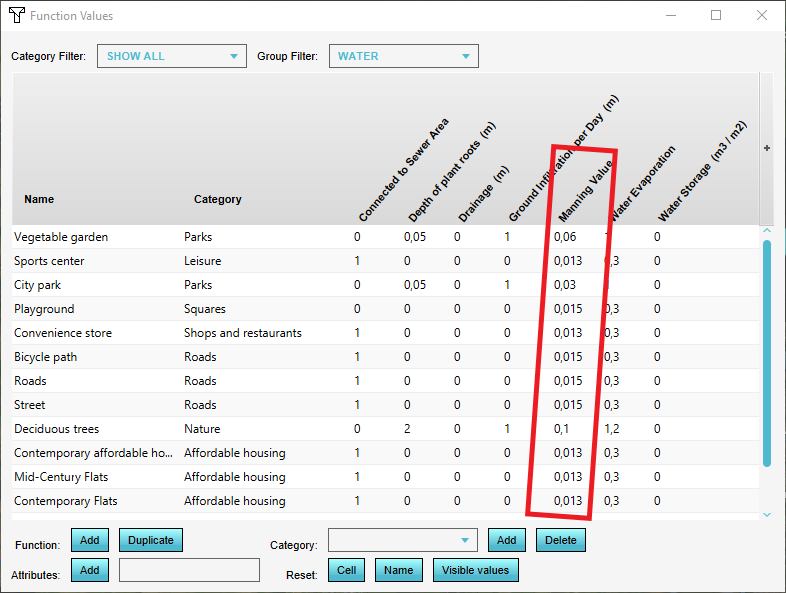Water manning (Water Overlay): Difference between revisions
Jump to navigation
Jump to search
No edit summary |
mNo edit summary |
||
| Line 15: | Line 15: | ||
{{article end | {{article end | ||
|notes= | |notes= | ||
* The [[Water manning prequel (Water Overlay)|manning value]] can be provided as a [[prequel]]. | * The [[Water manning prequel (Water Overlay)|manning value]] can alternatively be provided as a [[prequel]]. | ||
* The default function values are derived from online accessible databases<ref name="WikiEngineer"/> and are readily adjustable by the user. | * The default function values are derived from online accessible databases<ref name="WikiEngineer"/> and are readily adjustable by the user. | ||
* If no constructions are present on a [[Terrain]], the [[Terrain water manning (Water Overlay)|WATER_MANNING]] value of the surface terrain is used. | * If no constructions are present on a [[Terrain]], the [[Terrain water manning (Water Overlay)|WATER_MANNING]] value of the surface terrain is used. | ||
Revision as of 15:10, 11 January 2022
Template:Construction attributes
Constructions have an inherent "roughness", affecting the flow of water across their surface, which is expressed by the Gauckler–Manning coefficient or, in short, Manning's value (n).
Notes
- The manning value can alternatively be provided as a prequel.
- The default function values are derived from online accessible databases[1] and are readily adjustable by the user.
- If no constructions are present on a Terrain, the WATER_MANNING value of the surface terrain is used.
See also
References
- ↑ WikiEngineer (2008-2011). Manning Roughness Coefficients. Retrieved from: http://wikiengineer.com/Water-Resources/ManningRoughnessCoefficients
Template:WaterOverlay hydrological construction attribute nav
